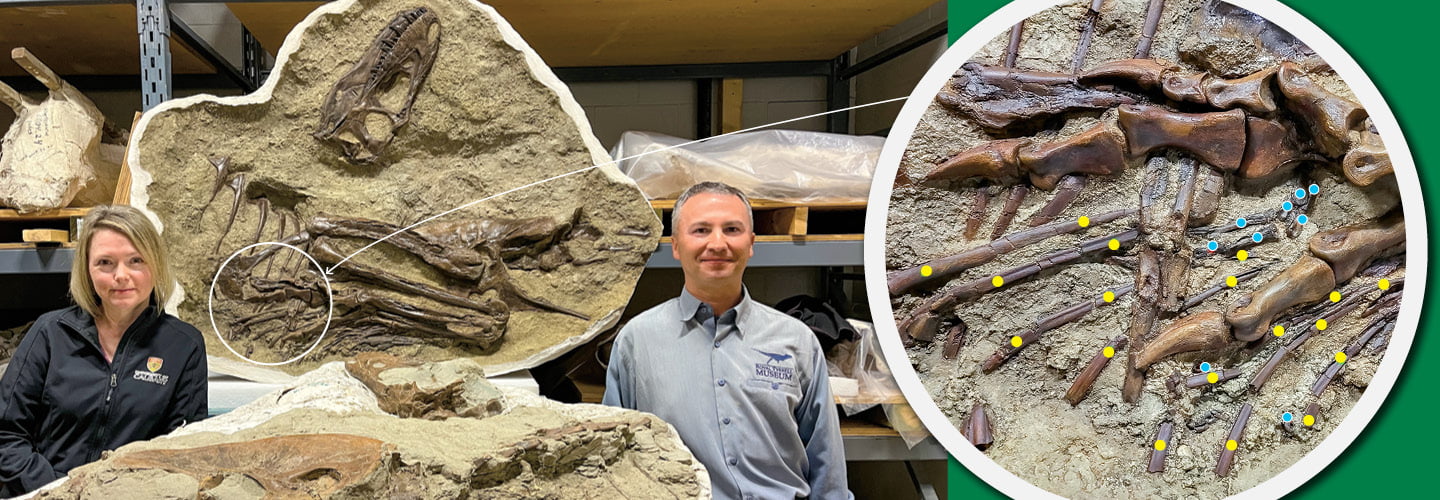Some 75.3 million years ago, a young dinosaur known as a Gorgosaurus swallowed the hind limb of a feathered dinosaur. It would be the predator’s last meal. Within days, the Gorgosaurus—a slightly smaller relative of the Tyrannosaurus rex—ended up dead in a river near what is now Alberta, Canada. By a stroke of luck, sediments rapidly covered much of the carcass and protected the dinosaur, and its dinner, from decay. The resulting fossil, shown here, was unveiled in December as one of the rare big dinosaur skeletons found with stomach contents still preserved inside. (Usually with big dinosaurs, there’s just pulverized bone in the stomach.) Researchers say the fossil provides the first direct evidence that the diets of tyrannosaurs changed as they aged: Nimble juveniles went after small, fast-running prey, while adults feasted on large, plant-eating dinosaurs like the Triceratops. Tyrannosaurs were “actually quite sophisticated feeders,” Stephen Brusatte, a paleontologist at the University of Edinburgh, told The Washington Post. “They had to grow into their bone-crushing personas.”

Darla Zelenitsky, a paleontologist at the University of Calgary in Alberta, Canada; François Therrien, curator of dinosaur palaeoecology at Alberta’s Royal Tyrrell Museum, where the fossil can be found; Still digesting: Gorgosaurus’s left side, with yellow dots indicating its rib cage and blue dots indicating its prey. The larger bones are the Gorgosaurus’s foot. Royal Tyrrell Museum via The New York Times
A Dinosaur’s Final Feast
Julius Csotonyi/Royal Tyrrell Museum via The New York Times
Text-to-Speech
